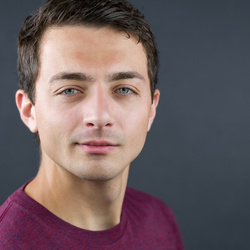The nuances of film exposure can be tricky, especially when you’re just starting out, but getting a grasp on these basics will dramatically improve your work.
Coming to you from Teo Crawford, this informative video covers the essentials of film exposure, particularly focusing on how to expose your film correctly and whether to shoot at box speed. Crawford begins by breaking down the basics, explaining that when you shoot film, you can either rely on automatic exposure, often found in point-and-shoot cameras, or go the manual route, where you control the settings yourself. While automatic exposure might seem convenient, it can sometimes lead to mistakes. Manual control, though more challenging, offers you the precision needed for consistently well-exposed photos.
Crawford explains how film exposure works by comparing it to cooking. Too much light, and you’ll overcook the film, leading to an overly bright negative. Too little light, and you’ll undercook it, resulting in a dark, muddy image. The key is finding that balance, which is where light metering comes in. Crawford walks through his process, mentioning that he often uses an app on his phone as a light meter. He notes that while professionals might use dedicated light meters, a simple app can do the job effectively.
Crawford offers practical advice on metering for shadows rather than highlights when shooting film. He explains that, unlike digital photography, where it’s easier to recover details from shadows, film tends to retain more detail in the highlights. This means that underexposing film often leads to irretrievable dark areas, whereas overexposing can still result in usable, albeit bright, images. Crawford’s method involves metering the darker parts of a scene to ensure they are properly exposed, then adjusting settings like aperture and shutter speed accordingly.
Another important aspect Crawford touches on is shooting at box speed. Box speed refers to the ISO rating printed on the film’s box, which is the recommended sensitivity setting for that film. Crawford discusses how some photographers prefer to set their ISO lower than the box speed, effectively overexposing the film slightly to get better shadow detail. However, Crawford himself doesn’t strictly follow this rule, instead focusing on metering for shadows and adjusting as needed based on the specific scene. Check out the video above for the full rundown from Crawford.







Honestly, after learning about the relationship between various B&W films and development processes, I'm glad I no longer have to deal with it. Tri-X could be shot at box speed with D76, but somewhat lower is you used Microdol, and maybe a little higher with HC110. The whole process took some planning depending on what results your were after. Color? Sometimes you needed to overexpose and underdevelop, again, depending on what you were after. And you needed a cooperative lab. Don't miss those days at all.